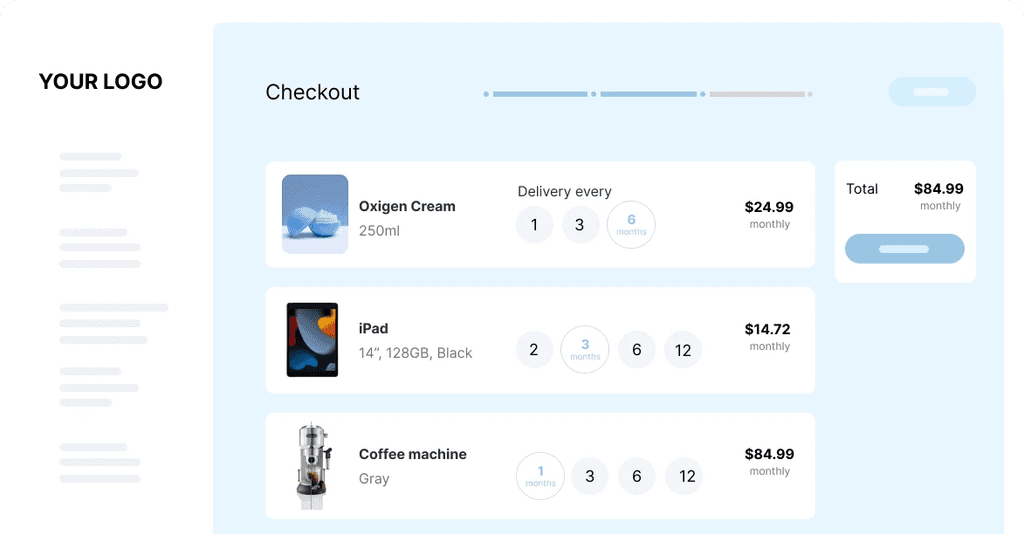Boost Your Bike Rental Business with Expert Strategies
Patricia Bernal

Apr 1, 2025
The Untapped Potential of Today's Bike Rental Market

The bike rental market is experiencing dynamic growth, creating exciting opportunities for entrepreneurs. This surge isn't just a passing trend; it’s driven by significant changes in how people approach urban transportation and leisure. This presents an ideal moment to enter the bike rental business.
Factors Driving Market Growth
Several factors contribute to this upward trajectory. A major driver is the increasing focus on sustainability and the demand for eco-friendly transportation. Bikes offer a clean alternative to cars, reducing carbon emissions and promoting a healthier environment.
Urbanization and traffic congestion also play a role. Bikes provide a practical solution for navigating crowded city streets, offering a convenient and efficient way to commute or explore.
This market expansion reflects broader societal shifts. Younger generations prioritize experiences over possessions, leading to higher demand for services like bike rentals that enable exploration and adventure.
The rise of the sharing economy has normalized renting, making bike rentals more appealing to a wider audience.
The U.S. bike and scooter rental market has seen substantial growth, generating USD 1,450.7 million in 2023. Projections indicate it will reach USD 4,354.6 million by 2030, with a 17% CAGR from 2024 to 2030. The pedal bike segment currently holds the largest market share (41.59% in 2024).
However, the electric bike segment is the fastest-growing, driven by the increasing demand for sustainable transportation and the rise of companies like Nextbike, Cityscoot, and Lyft. More detailed statistics can be found here: https://grandviewresearch.com/horizon/outlook/bike-and-scooter-rental-market/united-states
Market Segmentation and Opportunities
The bike rental market can be segmented by bike type, rental duration, and target customer. Understanding these segments is crucial for tailoring services and maximizing profits.
Tourists might prefer hourly or daily rentals for sightseeing, while commuters might choose weekly or monthly subscriptions. Offering specialized bikes like mountain or cargo bikes can attract niche customer groups like adventure seekers or families.
The following table provides a detailed breakdown of the key bike rental market segments, their current market share, projected growth rates, and primary market drivers.
Bike Rental Market Segments & Growth Rates
Market Segment | Current Market Share (%) | Growth Rate (%) | Key Market Drivers |
|---|---|---|---|
Pedal Bikes | 41.59 | 12 | Affordability, accessibility, established infrastructure |
Electric Bikes | 35 | 20 | Sustainability, convenience, longer range |
Scooter Sharing | 23.41 | 15 | Urban mobility, ease of use, affordability |
This table illustrates the relative market share and growth potential across various segments within the bike rental market, highlighting the dominance of pedal bikes while showcasing the rapid growth anticipated in the electric bike segment.
Capitalizing on Emerging Trends
Successful bike rental businesses are combining sustainability and convenience. They understand today's customers seek a seamless, integrated experience. This means offering user-friendly online booking platforms, convenient locations, and well-maintained bikes.
Integrating technology enhances the customer experience and streamlines management. GPS tracking, smart locks, and mobile apps offer features like real-time bike availability, keyless entry, and automated payments. These advancements improve security and efficiency, and provide valuable business insights. These trends provide ample opportunities for new bike rental businesses to flourish.
From Concept to Reality: Launching Your Bike Rental Business

Turning your bike rental business idea into a profitable venture takes planning and effort. This section offers a practical guide, outlining the essential first steps. These steps cover everything from focused market research to finding the best locations with plenty of potential customers. Want more advice? Check out this helpful resource: How to master launching your bike rental business.
Understanding Your Market and Customers
First, understand your target market’s specific needs and preferences. Are you serving tourists exploring scenic routes, locals needing convenient commuting solutions, or a combination? This crucial information will shape every part of your business, from the kinds of bikes you offer to how you price them.
For example, electric bikes and guided tours might appeal to tourists. If you’re targeting commuters, sturdy, affordable bikes with monthly subscriptions might be more successful. Also, consider local demographics, competitors, and the availability of bike lanes and paths.
Smaller, local bike rental businesses are often important for community mobility and the local economy. Businesses like Sceqic Cycles in Idaho have shown how successful local bike rentals can be, even with limited starting resources. They contribute to the bike rental industry by serving both local communities and tourists, especially in areas with limited public transport. Learn more about local bike rental impact.
Crafting a Winning Business Plan
Once you know your market, a strong business plan is crucial for your bike rental business. This plan serves as a roadmap, outlining your business objectives, operational strategies, and financial projections. It’s essential for securing funding and navigating the initial stages of your new venture.
A realistic financial model is a key part of your business plan. This includes estimating startup costs, operating expenses, and potential revenue. Remember to include costs like bike purchases, maintenance, insurance, marketing, and any required permits or licenses.
Navigating Legal and Operational Hurdles
Starting a bike rental business means handling legal and operational details. This includes obtaining the correct business licenses and permits, understanding local regulations, and sorting out insurance. You’ll also need to think about liability waivers and safety measures to reduce risk.
Efficient operations are also essential. Create a system for bike maintenance and repairs, a booking and reservation process, and a pricing strategy. These early steps will make your operations smoother and contribute to your long-term success. Getting these details right ensures your business operates legally and efficiently.
Location, Location, Location: Choosing the Right Spot
Your bike rental business’s location significantly affects its visibility and how easy it is for customers to find. Ideally, you want a high-traffic spot easily accessible to potential customers. This could be near tourist attractions, parks, or public transit hubs.
Think about your target market’s needs. If you mainly serve tourists, a spot near hotels or popular landmarks is best. This strategic location makes it more likely you’ll attract customers and maximize your earnings. Choosing the right location sets the stage for a steady stream of customers.
Revenue Models That Actually Work for Bike Rentals

A successful bike rental business needs more than just bikes. It requires a solid, well-thought-out revenue model. This means looking beyond basic hourly rentals and diversifying income streams. This section explores proven revenue models to help your bike rental business thrive.
Hourly and Daily Rentals: The Foundation
Hourly and daily rentals are the bread and butter of most bike rental businesses. This model offers flexibility for customers and can be especially profitable in tourist destinations. However, relying only on short-term rentals can make your business susceptible to seasonal changes.
Membership Programs: Building Loyalty and Predictable Income
Membership programs offer a consistent income stream and build customer loyalty. Offering weekly, monthly, or annual memberships provides steady revenue, even during the off-season. This model also encourages repeat business and fosters a sense of community around your brand.
Corporate Partnerships: Tapping Into a Steady Client Base
Partnering with local businesses offers unique growth opportunities. You can offer discounted rentals to employees or create corporate packages for team-building events. Corporate partnerships provide a reliable revenue source and increase brand visibility within the community. You might find helpful tips in this article: How to master renting issues in business and their solutions.
Tourism Packages: Creating Experiential Offerings
Working with local tourism operators to develop experience-based packages can significantly boost revenue. Think about combining bike rentals with guided tours, wine-tasting trips, or other local attractions. These packages appeal to a wider audience and can justify higher prices than standard rentals.
Seasonal Strategies: Maximizing Revenue Throughout the Year
Adapting your offerings to each season is essential for consistent profitability. During the off-season, consider discounts, maintenance packages, or even indoor cycling classes to maintain cash flow. This flexibility helps your business stay profitable year-round.
Complementary Offerings: Expanding Your Revenue Streams
Selling related products or services can increase your average order value. Consider offering accessories like helmets, locks, and apparel, or providing repair services. These add-ons improve customer convenience and generate extra revenue.
Market Growth and Statistics
The global bike and scooter rental market is experiencing significant growth. Estimated at USD 5.4 billion in 2023, it's projected to grow at a CAGR of over 15% between 2023 and 2032. This expansion is driven by the growth of micro-mobility infrastructure in cities. You can find more detailed statistics here: https://www.gminsights.com/industry-analysis/bike-and-scooter-rental-market.
Comparing Bike Rental Business Models
To help you choose the right model for your business, the table below compares different approaches based on initial investment, operational complexity, profit potential, and ideal market fit.
Business Model | Initial Investment | Operational Complexity | Profit Margin | Best Market Fit |
|---|---|---|---|---|
Hourly/Daily Rentals | Low | Low | Moderate | Tourist destinations, urban areas |
Memberships | Moderate | Moderate | High | Areas with consistent local demand |
Corporate Partnerships | Low | Low | Moderate | Business districts, urban areas |
Tourism Packages | Moderate | High | High | Tourist destinations, scenic areas |
This table highlights the trade-offs between different models. For example, while tourism packages offer high profit margins, they also involve higher operational complexity. Hourly rentals are easier to manage but may yield lower profits.
By understanding and implementing these varied revenue models, your bike rental business can achieve greater financial stability and long-term success. Diversification helps manage seasonal changes and allows you to capitalize on the expanding bike rental market.
Tech Solutions That Transform Bike Rental Operations

Technology is essential for modern bike rental businesses. Smart operators are using it to enhance the customer experience, improve operations, and stay ahead of the competition in this expanding market. The right combination of tech tools can make a big difference.
Essential Tech for Bike Rentals
Several key tech components form the foundation of a successful bike rental business:
Online Booking Platforms: Easy-to-use websites and mobile apps are crucial. Customers expect real-time availability and secure online payment options. This empowers customers to book rentals on their own schedule, wherever they are.
Fleet Management Software: This software is the control center for your bikes. It helps manage inventory, track maintenance, and analyze usage data. This can reduce maintenance costs and make your operations more efficient.
GPS Tracking and Smart Locks: These technologies boost security by deterring theft. They also provide valuable data on bike usage. For example, you can see popular routes and high-demand locations. This data can help you make better decisions about bike placement and business expansion.
Payment Processing Integration: Seamless integration with payment gateways like Sharpei offers customers flexibility. They can choose from various payment options like rentals, subscriptions, and lease-to-own models. Sharpei's adaptable platform allows bike rental businesses to manage diverse revenue streams. This streamlines transactions and improves cash flow.
Choosing the Right Tech Stack
The ideal technology for your bike rental business depends on its size and specific needs. A small, local operation may start with a simple booking system and add features as it grows. A larger business with multiple locations might need a more comprehensive platform from the beginning.
For example, a startup might initially prioritize an affordable booking platform and basic fleet management tools. As the business grows and expands its fleet and locations, integrating GPS tracking, smart locks, and advanced analytics may become necessary. This measured approach ensures that the technology supports the business's growth and avoids unnecessary complications.
Implementation and Adoption Strategies
Successfully incorporating new technology requires careful planning and execution. Begin by assessing your current operations. Identify areas where technology can improve efficiency or the customer experience. Then, research different solutions and choose the one that best meets your needs and budget.
Staff training is vital for successful technology adoption. Regular maintenance and updates are also essential to ensure optimal performance. This ongoing investment will maximize your return and help your bike rental business thrive.
Magnetic Marketing Strategies for Bike Rental Businesses
Attracting customers in the competitive bike rental market demands a strategic marketing approach. It's not enough to simply have bikes available; you need to actively engage with your target audience. Let's explore some key strategies to help your bike rental business stand out.
Digital Domination: Owning the Online Space
A robust online presence is essential. This includes a user-friendly website, active social media engagement, and effective Search Engine Optimization (SEO).
Your website should clearly showcase your bike fleet, pricing, and any special offers. High-quality photos and videos of your bikes and local riding areas can significantly enhance your site’s appeal. An integrated online booking system makes reservations and payments seamless for customers.
Social media platforms are powerful tools. Share engaging content related to cycling, local events, and customer testimonials. Targeted advertising on platforms like Facebook and Instagram allows you to reach specific demographics.
SEO is crucial for driving organic traffic to your website. By using relevant keywords related to bike rentals and your location, you can improve your visibility in search engine results.
Building an Authentic Brand: Standing Out from the Crowd
Beyond digital tactics, a strong brand identity is key. What makes your business unique? Do you specialize in certain types of bikes, like electric bikes or mountain bikes? Do you offer guided tours or other special experiences?
Clearly communicating your value proposition attracts the right customers. For example, if you focus on families, highlight safety features and child-friendly options. If you target adventure-seekers, showcase high-performance bikes and challenging trails.
Local Partnerships: Connecting With Your Community
Strategic partnerships with local businesses can significantly expand your reach. Collaborate with hotels, tour operators, or even local cafes. Cross-promote each other’s services to create a mutually beneficial network that drives customer traffic.
Consider offering discounts to hotel guests or creating package deals with local attractions. These collaborations introduce your business to a wider audience.
Loyalty Programs and Seasonal Promotions: Keeping Customers Coming Back
A loyalty program encourages repeat business. Reward returning customers with discounts or exclusive offers. This fosters customer loyalty and builds a strong sense of community.
Seasonal promotions are also beneficial. Offer discounts during the off-season or create themed promotions around local events. This keeps your business top-of-mind.
Crafting Compelling Content: Sharing Your Passion for Cycling
Engaging content resonates with your audience. Share blog posts, articles, or social media updates about cycling routes, bike maintenance tips, and local events.
For example, create a blog post highlighting scenic routes in your area or share a video tutorial on basic bike maintenance. This establishes you as a knowledgeable resource.
The bike rental market is expected to grow significantly, from USD 3.51 billion in 2023 to USD 11.93 billion by 2030, with a CAGR of 19.1%. This growth is driven by factors like the convenience of online booking and the increasing popularity of e-bikes. More detailed statistics can be found here: https://virtuemarketresearch.com/report/bike-rental-market. You might also find this resource helpful: Top 10 Strategies to Boost Your Rental Business.
By implementing these marketing strategies and adapting them to your target audience, you can attract new customers, build loyalty, and position your business for success.
Scaling Your Bike Rental Business Beyond the First Location
Expanding your bike rental business to new locations marks a significant step towards greater success. However, scaling requires careful planning and execution. This involves strategic decisions about fleet expansion, location selection, and adapting your operational systems. Let's explore key strategies for successfully scaling a bike rental business.
Strategic Fleet Expansion: Balancing Supply and Demand
As your business grows, your fleet needs to grow with it. But simply buying more bikes isn't the solution. Strategic fleet expansion involves analyzing data to understand customer demand and seasonal trends. For instance, are e-bikes gaining popularity? Do you see a spike in demand for certain bike types during particular times of the year?
These insights inform smart purchasing decisions, ensuring you have the right bikes at the right time. Also, remember to consider the lifecycle of your bikes. Factor in maintenance costs and depreciation when budgeting. This proactive approach keeps your fleet profitable as it expands.
Location, Location, Location: Expanding Your Reach
Choosing the right locations is paramount for successful expansion. Consider factors like demographics, local regulations, and existing competition. A location near tourist attractions might prioritize short-term rentals and premium bikes, while a location near a university could focus on affordable long-term options for students.
Thorough research on potential locations is vital. Understand local demand, accessibility, and the competitive landscape. This due diligence helps avoid costly mistakes and ensures your expansion aligns with your broader business strategy.
Evolving Operational Systems: Adapting to Growth
As your bike rental business expands, your operational systems must adapt. A system designed for a single location might not be scalable. Investing in robust bike rental management software is key. Look for software that can handle online bookings, track inventory across multiple locations, and automate customer communications. Bike rental management software streamlines operations and provides valuable business insights.
Also, develop standardized procedures for bike maintenance, customer service, and staff training. This ensures consistent quality and improves operational efficiency across all your locations.
Strategic Partnerships: Leveraging External Resources
Strategic partnerships are invaluable for growth. Collaborating with local hotels, tour operators, or other businesses can expand your customer base without drastically increasing overhead. For example, a hotel could offer discounted rentals to guests, or a tour operator might include your bikes in their packages.
These partnerships boost brand visibility and create valuable marketing opportunities, potentially leading to new revenue streams.
Recognizing Warning Signs and Avoiding Overexpansion
While growth is the goal, expanding too quickly can overextend your resources and negatively impact customer service. Warning signs include declining customer satisfaction, increased bike downtime due to insufficient maintenance staff, or difficulty managing logistics across multiple locations.
If you notice these signs, pause your expansion and focus on strengthening existing operations. Monitor your financial metrics closely. Are profit margins shrinking? Is cash flow tight? If so, re-evaluate your pricing strategy and operational efficiency. Slower, more strategic growth is often more sustainable in the long run.
Managing Seasonal Fluctuations at Scale
Seasonal changes present unique challenges for multi-location bike rental businesses. Demand may surge in some locations during certain seasons while others experience a downturn. This requires flexible inventory management and dynamic pricing. Consider relocating bikes between locations to meet fluctuating demand.
This approach optimizes bike utilization and maximizes profitability across your entire operation. It requires accurate demand forecasting and streamlined logistics.
By focusing on strategic fleet expansion, careful location selection, adaptable operational systems, and the development of strategic partnerships, you can successfully scale your bike rental business while maintaining quality and profitability. Ready to take your bike rental business to the next level? Sharpei offers flexible payment solutions, including rentals, subscriptions, and lease-to-own options, to help you maximize revenue and enhance the customer experience. Learn more about how Sharpei can help your business grow.
Related posts
Ready To Join The Circular Movement?
United for a smarter shopping experience and a better planet












